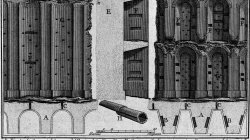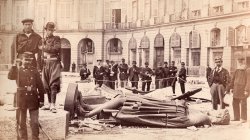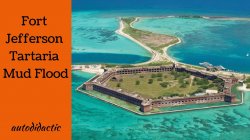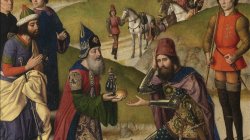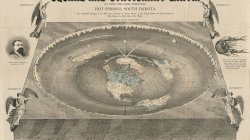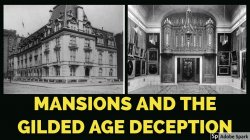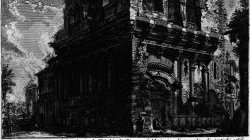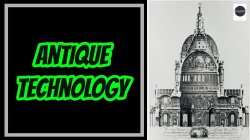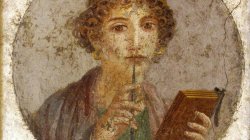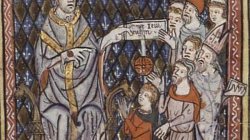You are using an out of date browser. It may not display this or other websites correctly.
You should upgrade or use an alternative browser.
You should upgrade or use an alternative browser.
Random Article
-
Replies: 0
1904-1978: Liverpool Anglican Cathedral
-
Replies: 27
How did the sand get into the Sahara Region?
-
Replies: 6
1740: Batavia aka Jakarta, Indonesia
-
Replies: 2
1812 French Invasion of Russia vs. Logistics
-
Replies: 1
1915 NYC Lewisohn Stadium
1892 Pioneer Building in Seattle: how and when was it built?
- 68,497
- 96
- 10
The Pioneer Building is a Richardsonian Romanesque stone, red brick, terra cotta, and cast iron building located on the northeast corner of First Avenue and James Street, in Seattle's Pioneer Square District. Completed in 1892, the Pioneer Building was designed by architect Elmer Fisher, who designed several of the historic district's new buildings following the Great Seattle Fire of 1889. Constructed at a cost of $270,000, the Pioneer...
Continue…
19th Century: The Boynton Bicycle Railroad
- 20,610
- 8
- 12
The Boynton Bicycle Railroad was a monorail in Brooklyn on Long Island, New York. It ran on a single load-bearing rail at ground level, but with a wooden overhead stabilizing rail engaged by a pair of horizontally opposed wheels. According to the Scientific American of 28 March 1891, the steam locomotive and cars were in regular and continuous operation for passenger service during several weeks in the summer of 1890. The service was provided...
Continue…
Ancient Romans built the General Post Office of Dublin
- 38,041
- 14
- 13
The front, which extends 220 ft, has an Ionic portico 80 ft wide, of six fluted Ionic columns, 54 inches in diameter. The frieze of the entablature is highly enriched, and in the tympanum of the pediment were the royal arms until removed following restoration in the 1920s. On the acroteria of the pediment are three statues by John Smyth: when facing the building Mercury on the left, with his Caduceus and purse; Fidelity on the right, with a...
Continue…
1897: Suspension Electric Railway by Eugen Langen
- 38,019
- 47
- 8
The Schwebebahn runs 18 trains per direction, per hour during the day, making it more frequent than just about any transit line in the U.S., and many German lines, too. It’s also an exceedingly rare design. The Schwebebahn is an urban Galapagos, a vision of a different evolutionary track that never quite spread beyond the Wupper Valley. The privately funded line connecting destinations in Elberfeld and Barmen began operation in 1901...
Continue…
1888: The Bohdan Khmelnytsky Monument
- 6,639
- 1
- 7
History of creating the monument appeared in public on initiative of a historian and professor of the Kyiv University Nikolay Kostomarov in 1840s. The assistant director of the Kyiv School District Mikhail Yuzefovich supported that idea and originally wanted to establish the monument for the 200th anniversary of the 1654 Council of Pereyaslav. The monument was supposed to be installed at the Bessarabian Square, for which the square carried...
Continue…
Fort Frederica and town Frederica
- 11,199
- 6
- 7
Fort Frederica National Monument, on St. Simons Island, Georgia, preserves the archaeological remnants of a fort and town built by James Oglethorpe between 1736 and 1748 to protect the southern boundary of the British colony of Georgia from Spanish raids. About 630 British troops were stationed at the fort. A town of up to 500 colonial residents had grown up outside the fort; it was laid out following principles of the Oglethorpe Plan for...
Continue…
Catacombs of Paris, Mud Flood Victims and Unidentified Dead. Reset?
- 38,978
- 21
- 16
It appears that we do not have any cemeteries out there, to account for the dead as they relate to various historical time frames. Sure we could go with cremations, and some other modes of riddance of the dead bodies. At the same time we pay the due respect to our dead, and we have places to show for it. Why didn't they? If we go along with the traditional linear development narrative, we would expect to see thousands of very old cemeteries...
Continue…
1882: Spain. Sagrada Família by the architect Antoni Gaudí
- 16,928
- 3
- 4
Gaudí left hardly any written documents, apart from technical reports of his works required by official authorities, some letters to friends (particularly to Joan Maragall) and a few journal articles. Some quotes collected by his assistants and disciples have been preserved. The only written document Gaudí left is known as the Manuscrito de Reus (Reus Manuscript) (1873–1878), a kind of student diary in which he collected diverse impressions...
Continue…
The Town of Ebenezer and its Silk Mills
- 9,843
- 3
- 9
Ebenezer, also known as New Ebenezer, is a ghost town in Effingham County, Georgia, along the banks of Ebenezer Creek. The town was established in 1734 by Salzburger emigrants. With the consent of governor James Oglethorpe, New Ebenezer was moved closer to the Savannah River in 1736, and at its new location many silk mills were opened. The Salzburger's pastor, the Reverend Johann Martin Boltzius, sought to build "a religious utopia on the...
Continue…
La Luz Silver Project, Real de Catorce, Ogarrio Tunnel and the First Majestic Silver Corp
- 9,576
- 5
- 4
La Luz Silver Project is a proposed mining venture in the Real de Catorce Desert, San Luis de Potosi, Mexico, by Canadian mining company First Majestic Silver. The project has been met with opposition from groups including the Wixakari, or Huichol tribe, as well the Wirikuta Defense Front. Wirikuta has been a sacred territory for the Wixarika people for thousands of years. Despite the 2008 of Hauxa Manaka pledging to protect it, at least 70...
Continue…
200 years ago: same Population Questions
- 53,782
- 35
- 13
This is one of the most moderate calculations that has ever been made on the subject of the population of the world at the period of the deluge, and yet is far above the highest calculation of the present number of mankind, which has never, we believe, been supposed to exceed from 800 to 1,000 millions. But what could the learned author mean by the first pair having “ left” only ten pair of marriageable persons at the end of the first...
Continue…
Annihilation of the Rigid Airship Industry
- 15,879
- 12
- 6
A rigid airship is a type of airship (or dirigible) in which the envelope is supported by an internal framework rather than by being kept in shape by the pressure of the lifting gas within the envelope, as in blimps (also called pressure airships) and semi-rigid airships. Rigid airships are often commonly called Zeppelins, though this technically refers only to airships built by the Luftschiffbau Zeppelin company.
Continue…
Did Monomotapa City become South African Pretoria City?
- 11,654
- 2
- 15
Pretoria was founded in 1855 by Marthinus Pretorius, a leader of the Voortrekkers, who named it after his father Andries Pretorius and chose a spot on the banks of the "Monkeys river" to be the new capital of the South African Republic. The elder Pretorius had become a national hero of the Voortrekkers after his victory over Dingane and the Zulus in the Battle of Blood River. The elder Pretorius also negotiated the Sand River Convention...
Continue…
1459: Fort Mehrangarh, Jodhpur and the Indus River
- 10,212
- 5
- 8
Fort Mehrangarh, located in Jodhpur, Rajasthan, is one of the largest forts in India. Built in around 1459 by Rao Jodha, the fort is situated 410 feet (125 m) above the city and is enclosed by imposing thick walls. Inside its boundaries there are several palaces known for their intricate carvings and expansive courtyards. A winding road leads to and from the city below. The imprints of the impact of cannonballs fired by attacking armies of...
Continue…
Welcome to Tenochtitlan as it was in 1520
- 44,056
- 34
- 13
Tenochtitlan, also known as Mexico-Tenochtitlan, was a large Mexica altepetl in what is now the historic center of Mexico City. The exact date of the founding of the city is unclear. The date 13 March 1325 was chosen in 1925 to celebrate the 600th anniversary of the city.
Continue…
SPQR this & SPQx that. Empires were everywhere.
- 27,272
- 13
- 15
SPQR is an abbreviation for Senātus Populusque Rōmānus. In English we get "The Roman Senate and People", or more freely "The Senate and People of Rome". This emblematic abbreviated phrase refers to the government of the ancient Roman Republic. It appears on Roman currency, at the end of documents made public by an inscription in stone or metal, and in dedications of monuments and public works.
Continue…
Noah's Flood and Russian Pineapple Trees
- 15,750
- 4
- 11
The pineapple fascinated Europeans as a fruit of colonialism. But it was not successfully cultivated in Europe until Pieter de la Court developed greenhouse horticulture near Leyden from about 1658. Pineapple plants were distributed from the Netherlands to English gardeners in 1719 and French ones in 1730. In England, the first pineapple was grown at Dorney Court, Dorney in Buckinghamshire, and a huge "pineapple stove" to heat the plants was...
Continue…
1905: Lewis and Clark Exposition in Portland, Oregon
- 14,917
- 2
- 9
The Lewis and Clark Centennial Exposition was a worldwide exposition held in Portland, Oregon, United States in 1905 to celebrate the centennial of the Lewis and Clark Expedition. During those four and a half months, 1,588,000 paying visitors passed through the gates to the 400-acre fairgrounds on the northwest edge of town. More than 400,000 were from outside the Pacific Northwest, a huge number of tourists for a city of perhaps 120,000...
Continue…
The Great Sphinx of Giza and its Mystery Chambers
- 22,214
- 4
- 8
At present the excavations are confined to the chamber in the head This chamber is 60ft' long by 14ft. wide. It is connected by tunnels with the temple of the sun, which rests within the paws of the Sphinx. Such relics as the "Crux Ansata" symbol of the sun are found by the hundreds. Several of these are gold, and some have wires for tiny bells, which, when sounded by the priests, summoned up ghosts.
Continue…
Vatican, where are the Keys of Saint Peter?
- 13,596
- 5
- 10
The Keys of Heaven refers to the image of crossed keys used in ecclesiastical heraldry, to represent the metaphorical keys of the office of Saint Peter, the keys of heaven, or the keys of the kingdom of Heaven. According to Catholic teaching, Jesus promised the keys to heaven to Saint Peter, empowering him to take binding actions. The keys of heaven or keys of Saint Peter are seen as a symbol of papal authority and are seen on papal coats of...
Continue…
Latest resources
-
-
-
-
Queen Califia and the Island of California She Ruled in ParadiseUntil the Great Floods Of the Early 1800’s
-
Blog Statistics
- Articles
- 670
- Comments
- 4,026
- Media items
- 848
- Resources
- 104
- Views
- 8,524,883
- Members
- 1,523
- Latest member
- Oleksandr


